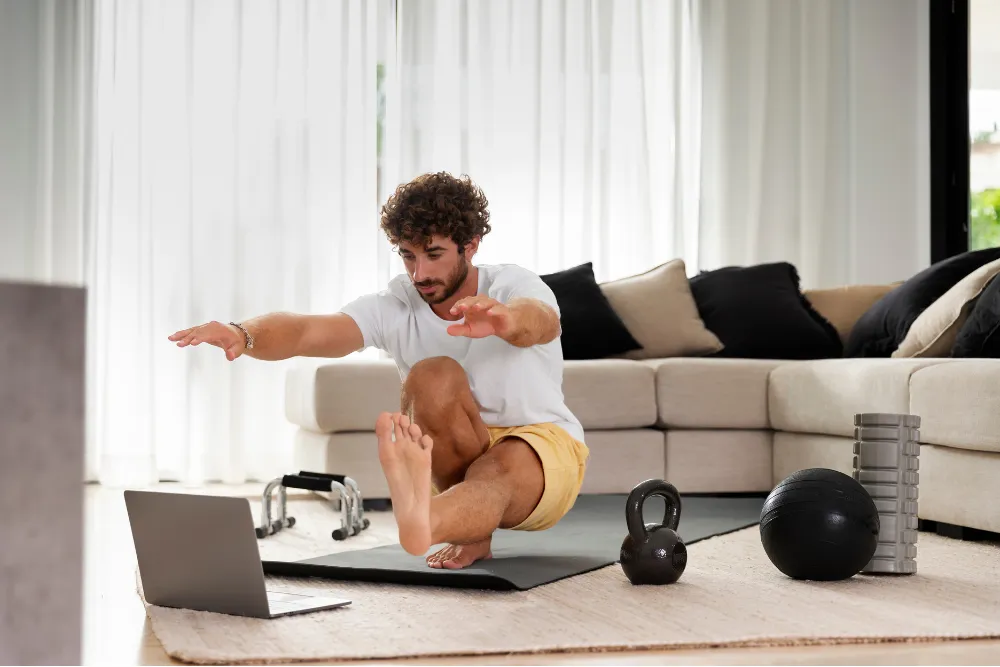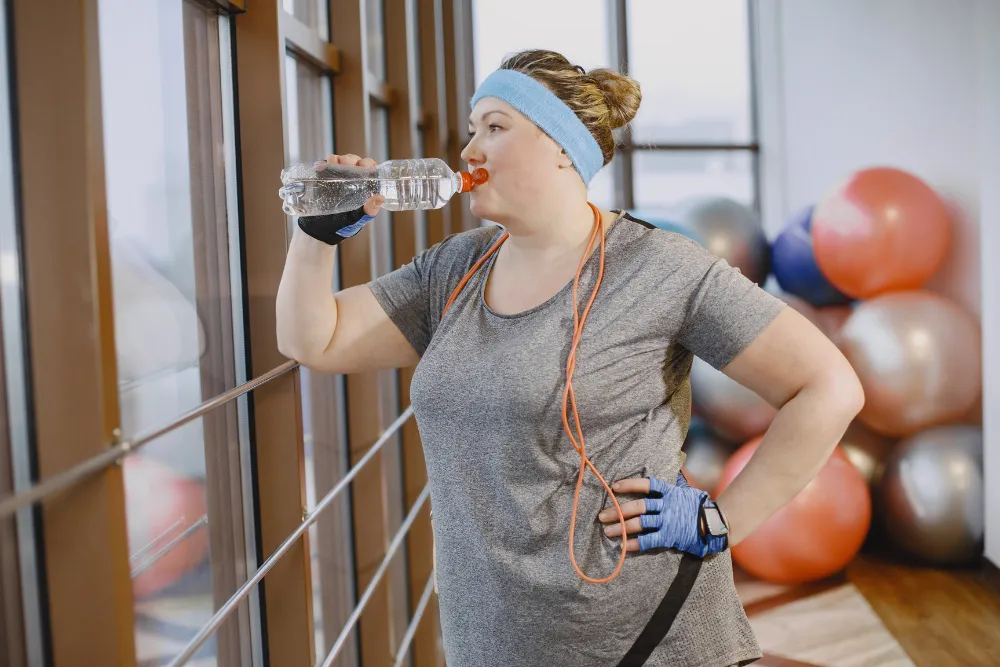People often think of lifting weights, running, or doing push-ups when they think of fitness. But most men don’t think about strengthening one part of their body very often: the pelvic floor. This group of muscles is very important for controlling the bladder, sexual health, and keeping the core stable. Kegel exercises are a simple but effective way for men of all ages to strengthen these muscles.
This article will tell you everything you need to know about Kegel exercises for men, including what they are, how to do them correctly, common mistakes, and how they compare to other exercises like the cherry pickers exercise for core strength. In the end, you’ll have a full guide to naturally improving your pelvic health.
What are Kegel exercises?

Kegel exercises are specific movements that make the muscles in the pelvic floor stronger. These muscles work like a hammock at the base of your pelvis, holding up the bladder, rectum, and prostate in men. If these muscles aren’t strong enough, they can cause problems like leaking urine, not being able to control your bladder, or even having trouble with sex.
You can do Kegel exercises anywhere, even at your desk, while driving, or even while lying down. You don’t need any special equipment, and they’re quiet enough that no one will notice you doing them.
Why should men do Kegel workouts?
Kegel exercises are often thought of as something women do, especially after giving birth, but they are just as good for men. Here are some important reasons why every man should do them:
1. Better control of the bladder
One of the most common benefits of Kegel exercises is that they help the bladder work better. Men may have trouble controlling their urine as they get older, especially after prostate surgery. Strengthening the pelvic floor helps control the flow of urine and stops leaks.
2. Better sexual health
A strong pelvic floor is connected to better erections, stronger orgasms, and more stamina in bed. Many men say that doing Kegel exercises regularly makes them feel more confident and perform better in bed.
3. Help After Prostate Surgery
A lot of men leak urine after having prostate surgery. Kegel exercises can help the body get back control over urination, which can speed up recovery.
4. Posture and Core Stability
The pelvic floor is part of the body’s core system, which also includes the abs, back, and diaphragm. Strengthening it is good for your bladder and sexual health, and it also helps with balance, stability, and posture.
5. Health that keeps you from getting sick
Even if you don’t have any pelvic health problems right now, doing Kegel exercises on a regular basis can help keep them from happening in the future. Think of it as a way to protect your pelvic health.
How to Find the Right Muscles

It’s important to find your pelvic floor muscles before you start doing Kegel exercises. Here are two easy ways to do it:
- Stopping Urine Flow Test: The next time you have to pee, try to stop or slow the flow. Your pelvic floor muscles are the ones you use. (Important: Don’t do this all the time; it’s just for identification.)
- Without moving, tighten. Think about how hard it is to hold in gas. You feel tight at the base of your pelvis because your pelvic floor is contracting.
You can start working on these muscles as soon as you know where they are.
A Guide to Kegel Exercises in Steps
- Lay on your back with your knees bent to get comfortable. You can also get better by practicing sitting or standing.
- Make the muscles move: Gently squeeze the muscles in your pelvic floor. You shouldn’t tighten your abs, thighs, or buttocks; only your pelvic floor should be working.
- Hold the Contraction: Begin by holding it for three to five seconds.
- Let go slowly: For 5 seconds, let the muscles relax all the way.
- Again, do 10 to 15 reps in one set. Try to do three sets every day.
You can add more sets and hold for 10 seconds as you get stronger.
How to Succeed
- Consistency Is Key: Just like with any other exercise, you need to do Kegel exercises regularly for weeks and months to see results.
- While you’re contracting, don’t hold your breath. Breathing normally helps your body relax.
- Take your time. Start with shorter holds and fewer reps, and then add more as your muscles get stronger.
- Don’t Overdo It: Too many contractions can make your muscles tired or tense, which can be uncomfortable.
Things You Shouldn’t Do
- Using the Wrong Muscles: A lot of men mistakenly flex their thighs or glutes. Just pay attention to the pelvic floor.
- Holding your breath puts extra stress on your body.
- Practicing Only When You Need to Go: It’s okay to identify the muscles this way but don’t do it all the time because it can cause bladder problems.
- Expecting Results Right Away: It might take weeks before you see better control or performance.
How Kegel Exercises Stack Up Against Other Workouts

Kegel exercises work on a very specific group of muscles, but they can be added to other workouts. For instance, ab workouts, yoga, and Pilates often have moves that strengthen the core and help the pelvic floor at the same time.
The cherry pickers exercise is a common core workout that is similar in some ways. To work the obliques and abs, cherry pickers require a twisting motion. They don’t directly strengthen the pelvic floor like Kegel exercises do, but they do help build core stability. Together, both exercises help you stand up straighter, keep your balance, and get stronger overall.
Kegel Exercises and How They Affect Sex
A strong pelvic floor is a secret weapon for sexual health. Research shows that men who do Kegel exercises on a regular basis may:
- Erections that are harder and last longer
- Better stamina and control during sex
- Orgasms that are stronger
- More self-assurance in private settings
This is because the muscles in the pelvic floor are directly responsible for getting an erection and ejaculating. Strengthening them improves blood flow and muscle control, which are both important for peak performance.
How to make Kegel exercises a part of your daily life

One of the best things about Kegel exercises is that you can do them anywhere, at any time. Here are some ways to work them into your daily life:
- When you brush your teeth
- On the way to work in the morning
- At your desk in between emails
- While you watch TV
- Just before going to sleep
No one has to know you’re doing them because they’re private.
After 40, do Kegel exercises
As men get older, their pelvic floor naturally weakens. This can cause problems with erections or leaking urine. You can keep these changes from happening by starting Kegel exercises in your 40s or later. This will help you stay in charge of your health. It’s never too late to start, even if you’ve never done them before.
Kegel exercises and other core workouts together
Kegel exercises are very effective on their own, but you can get even better results by doing them with other exercises that strengthen your core. For example, planks, bridges, and even the boat pose in yoga all work the deep core.
Once more, think about doing Kegel exercises along with something like the cherry pickers exercise. Cherry pickers work on the abs and obliques’ rotational strength, while Kegels keep the pelvic floor strong and stable. Together, they make a complete plan for keeping your pelvic and core healthy.
When Will You Start to See Results?
Most men see improvements in 4 to 6 weeks of doing Kegel exercises regularly. But it may take 3 to 6 months for bigger benefits, like less leaking urine or better sexual performance. The most important thing is to be patient and consistent.
Who Should Not Do Kegel Exercises?
Most men can safely do Kegel exercises, but there are some times when they need to be careful:
- If you have pelvic pain that won’t go away
- If they make your pain worse,
- If you’ve had surgery recently and are recovering, talk to your doctor first.
In these situations, it is best to get professional help from a physical therapist who specialises in pelvic health.
FAQS
2. Will Kegels help my abs get stronger?
Not really. Kegels work the muscles at the bottom of your body that you can't see. They don't offer you a six-pack, but they do assist your bladder, posture, and balance, which makes your core healthy overall.
3. Is it okay for youngsters or teens to do Kegels?
Most of the time, they don't have to. The pelvic muscles of kids are already powerful. Kegel exercises are better for adults, especially those over 40, who have had surgery, or who realize that their bladder control is getting worse or leaking.
4. Do I need a particular app or machine?
Nope! You can do Kegels while sitting, standing, or lying down. You don't need apps or gadgets to remind you to practice, although they can help. Your body alone can obtain results.
5. Are Kegels a good way to work out instead of other exercises?
No. Kegel exercises are great for working out muscles you can't see, but you also need to do regular exercises like walking. lifting, or stretching to stay healthy all over.
Final Thoughts
Kegel exercises are one of the most powerful but least known ways for men to improve their health. The benefits are huge, from controlling your bladder to having better sex and even having a stronger core. The best part is that they don’t need any equipment, a gym membership, or a lot of time.
Kegel exercises can help you get better after surgery, deal with incontinence or just feel better about yourself and get stronger. And when you do this exercise with other core workouts like the cherry pickers, you’ll not only make your pelvic floor stronger, but also your body more balanced and strong.
So, the next time you think about working out. don’t just think about the muscles you can see. Start with Kegel exercises to strengthen the muscles that are most important.














